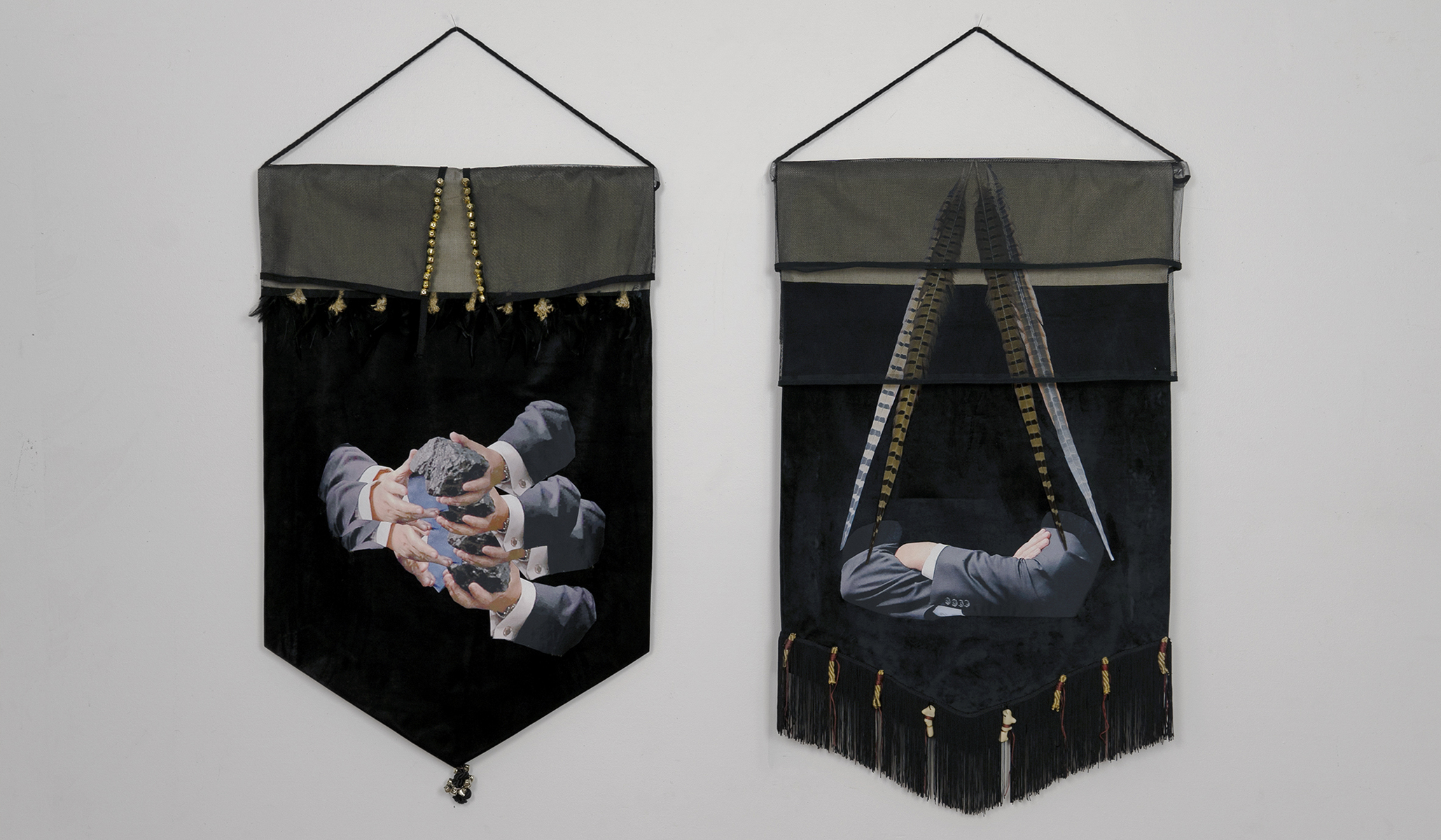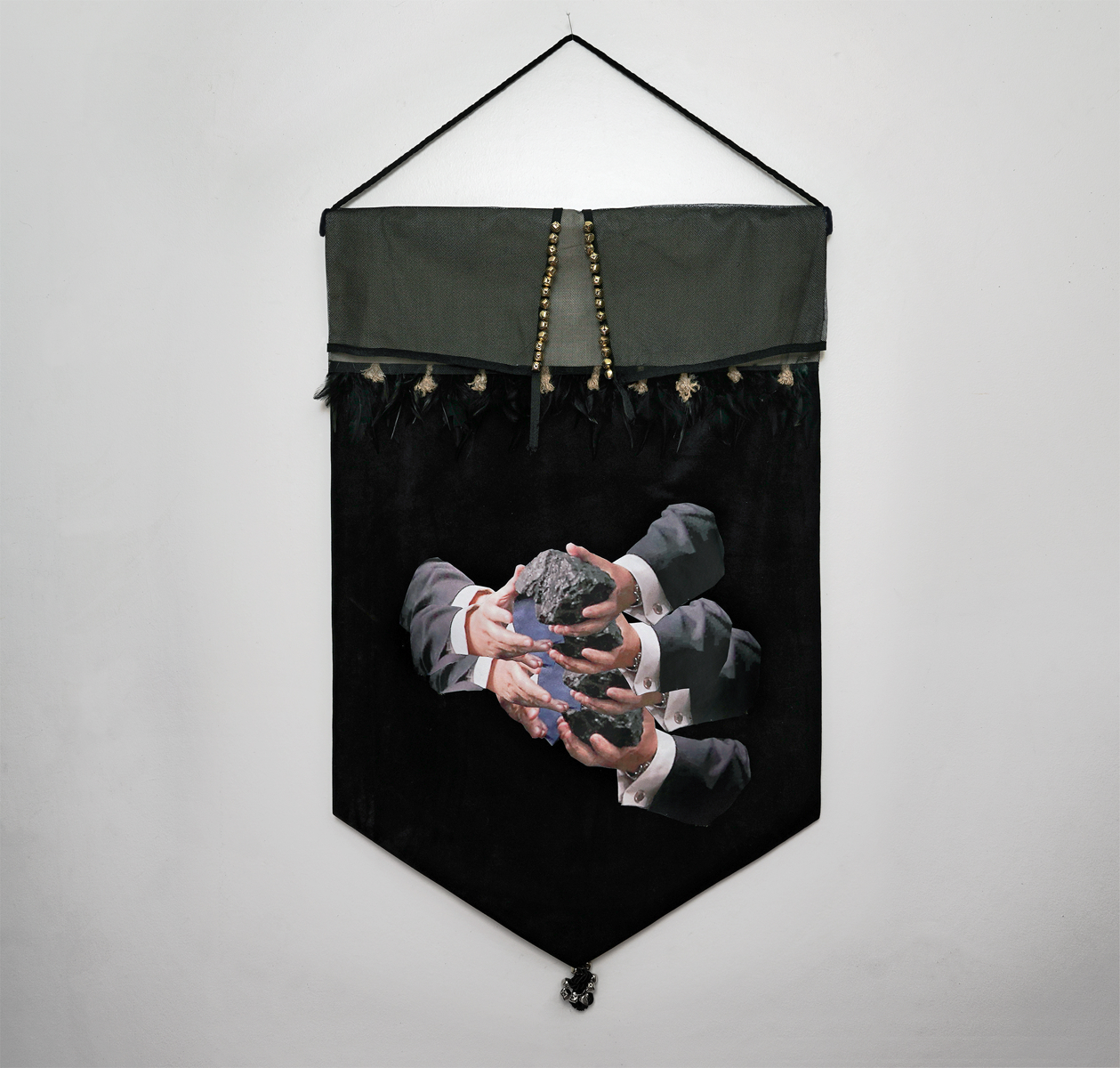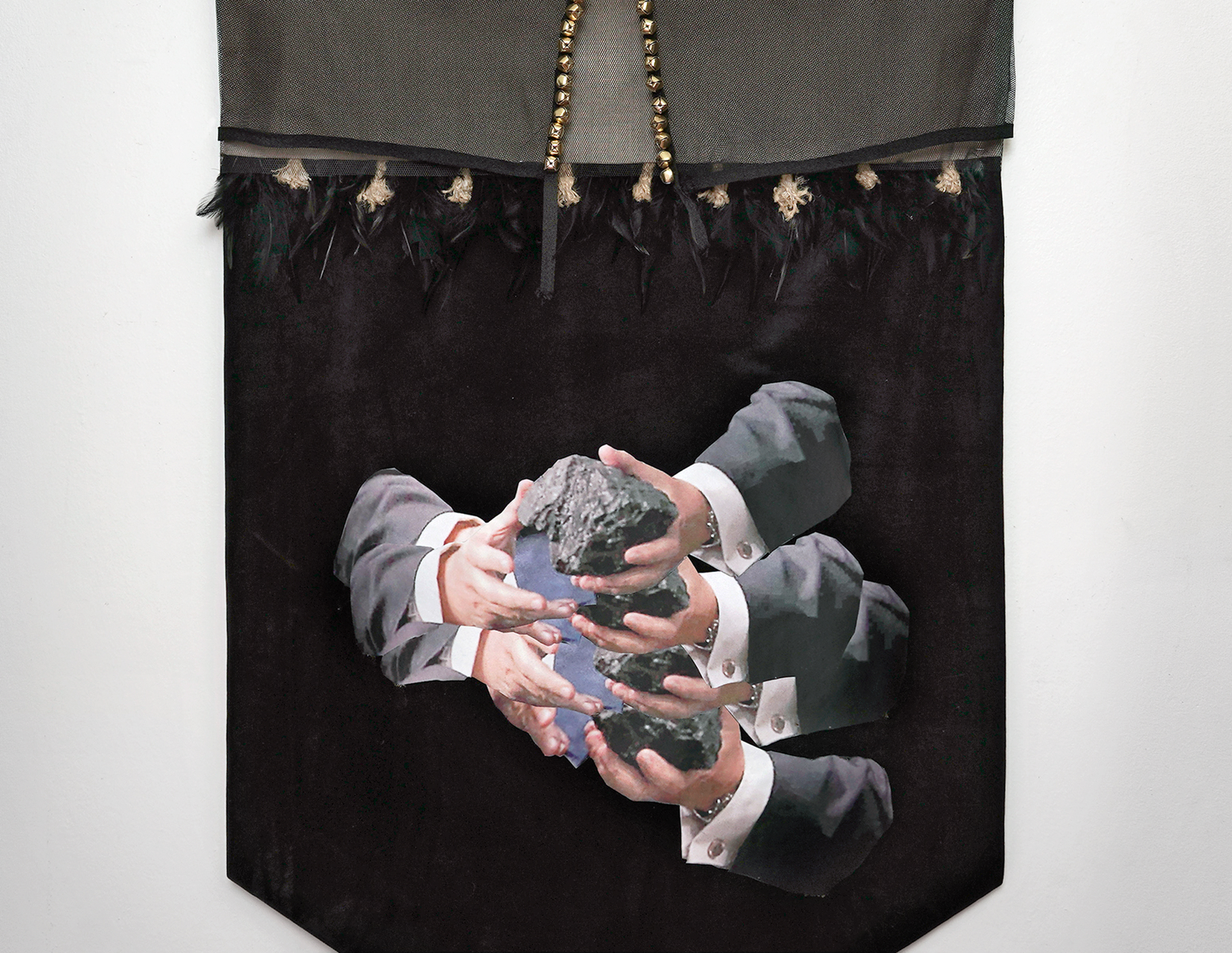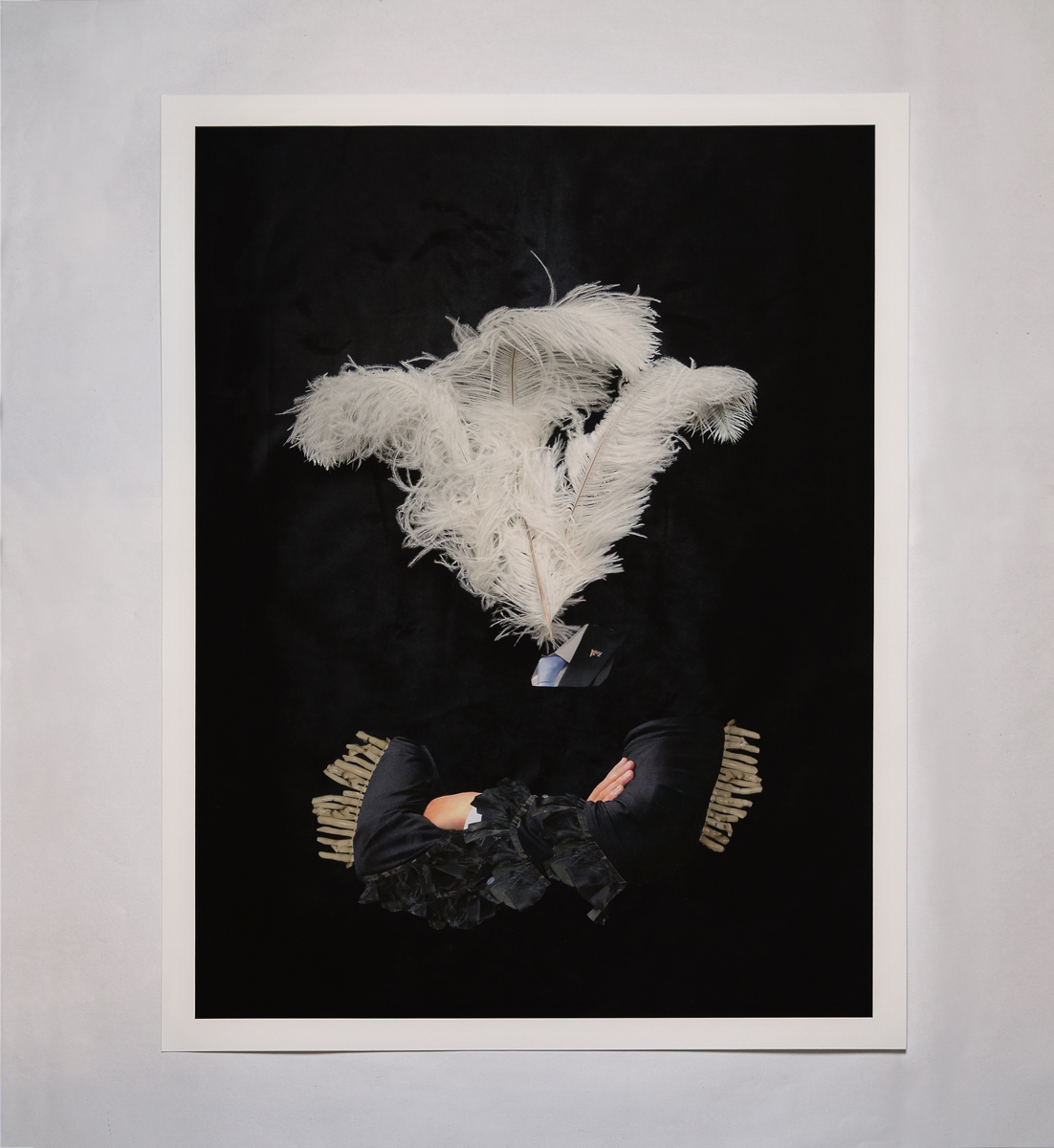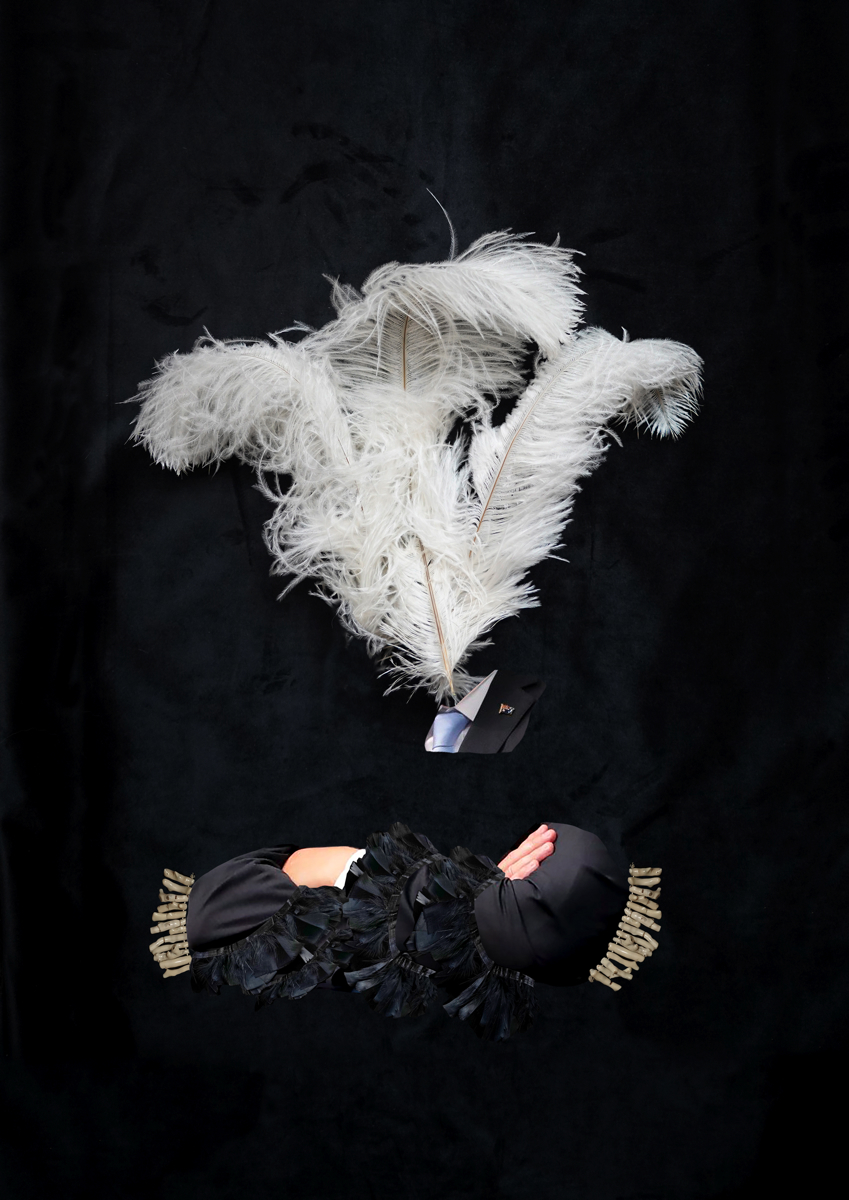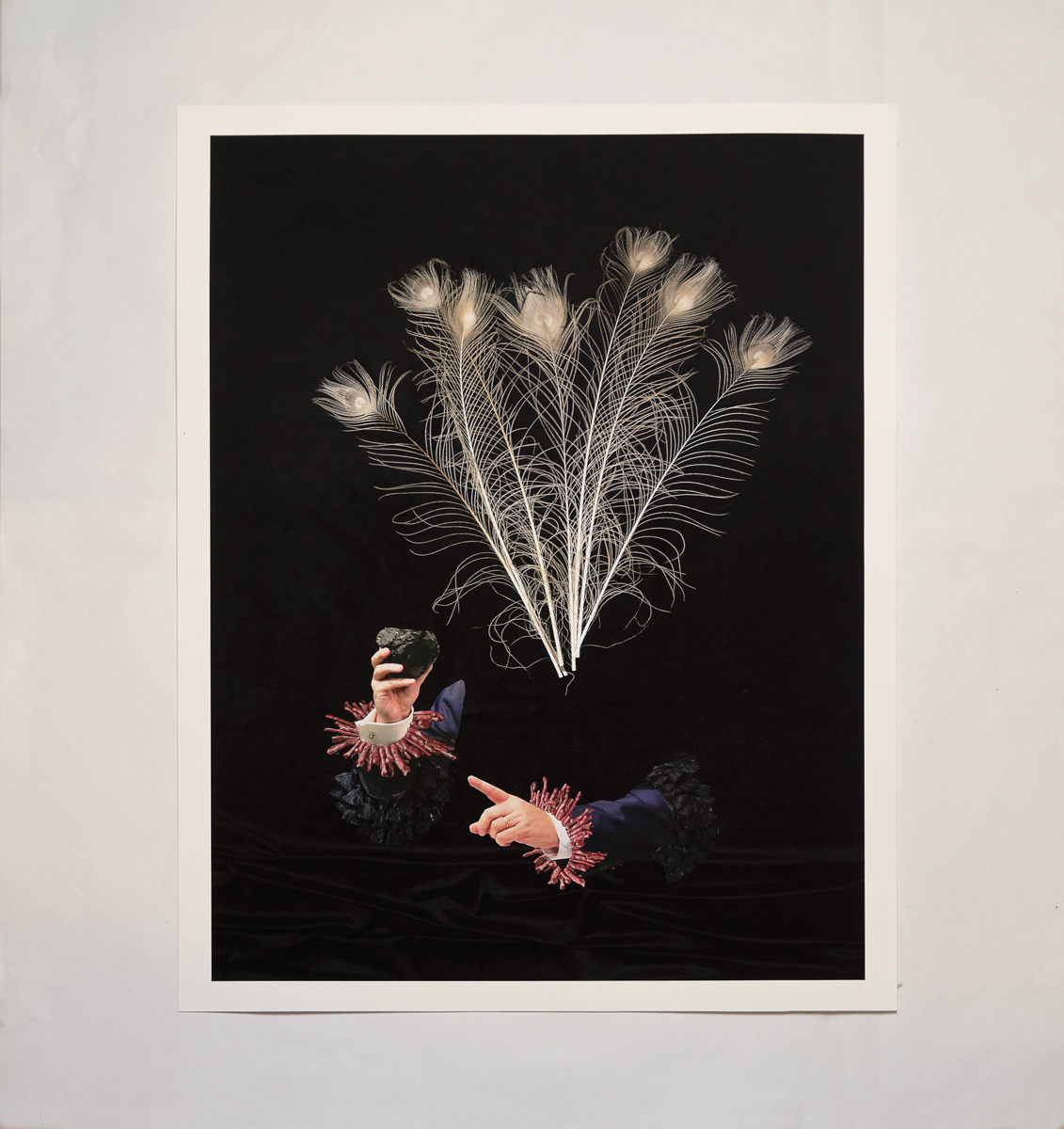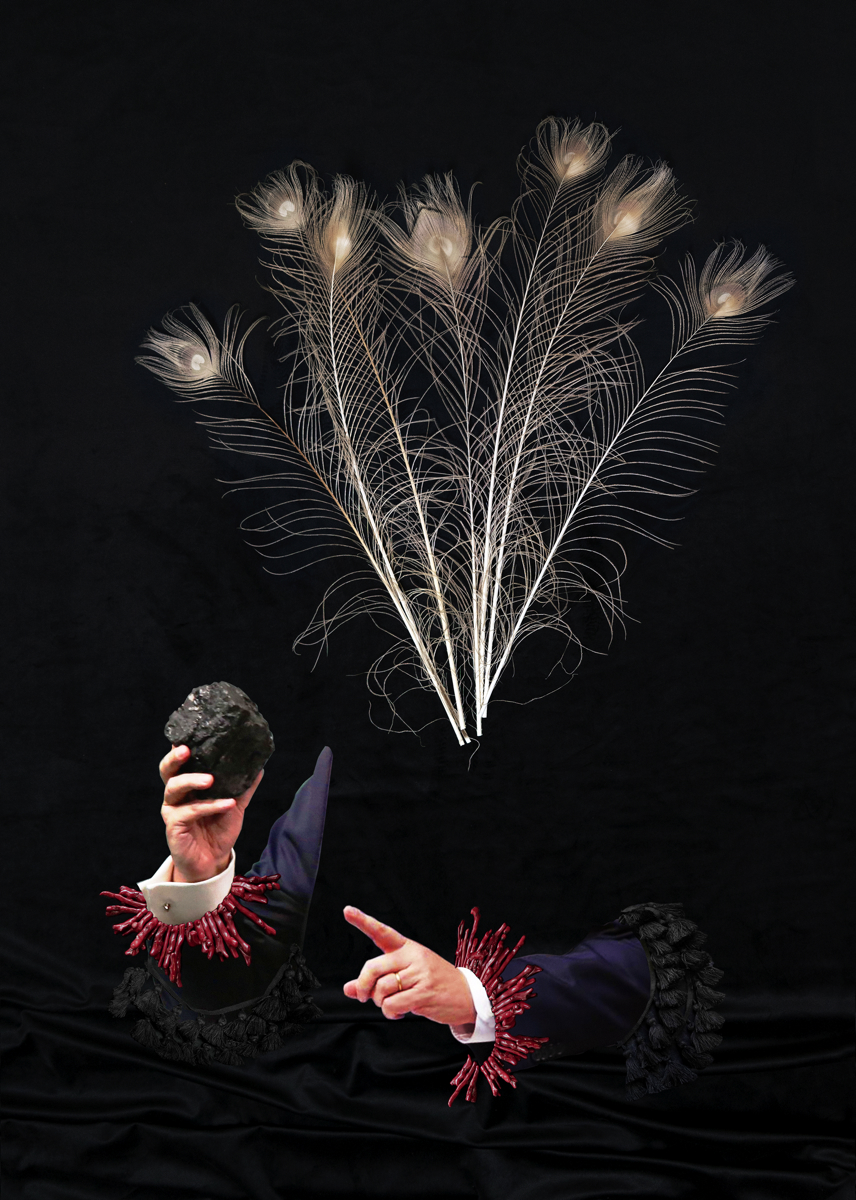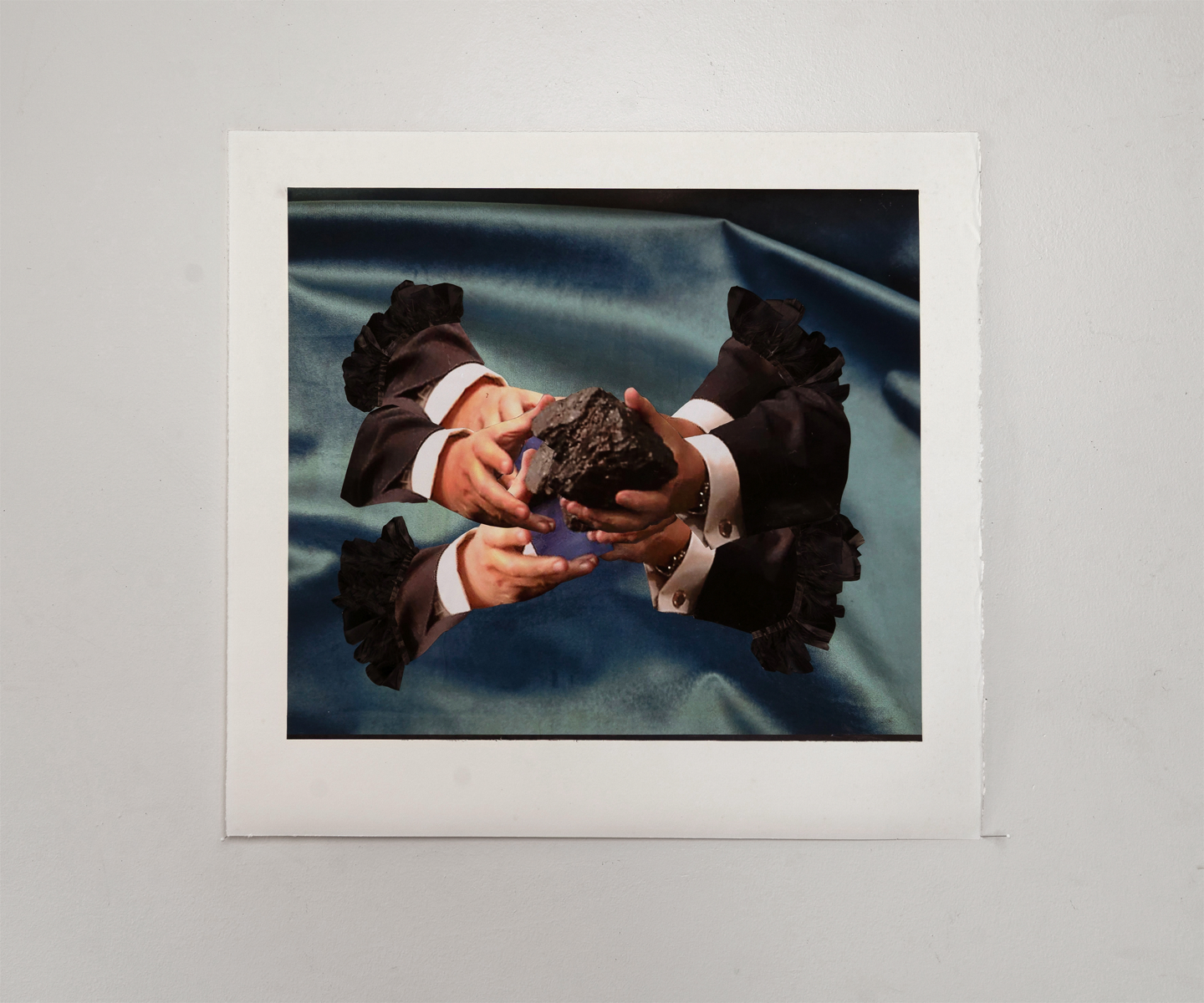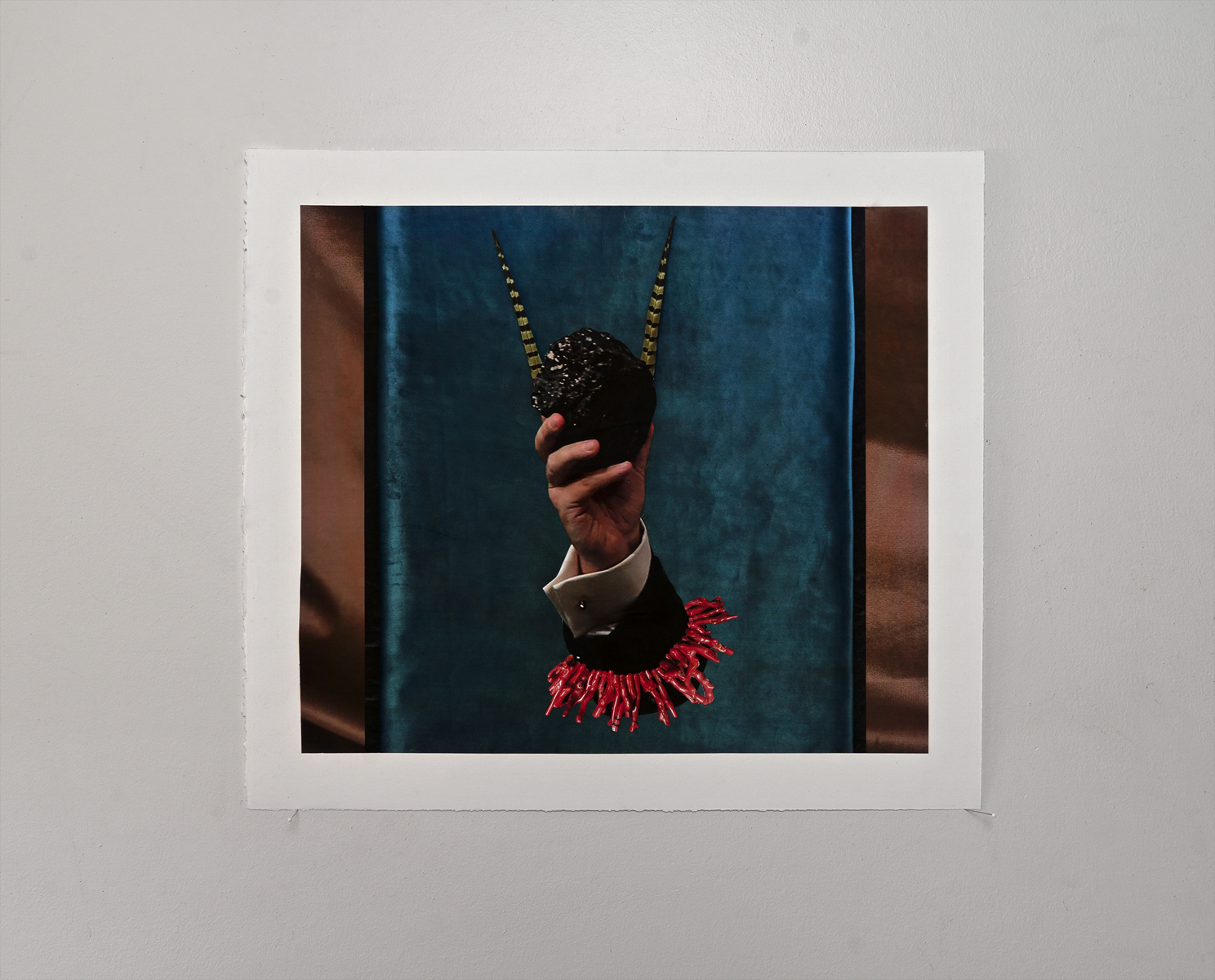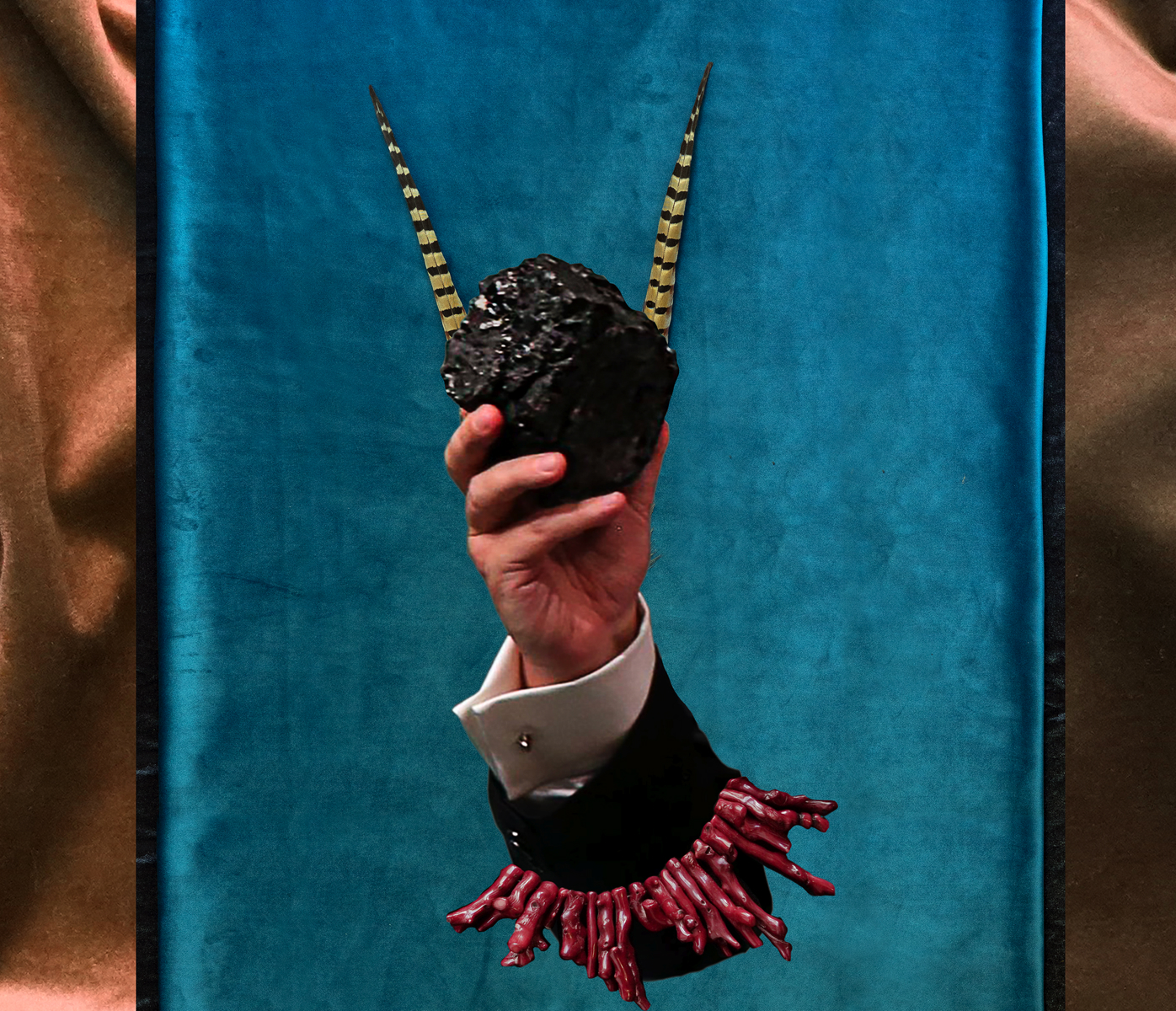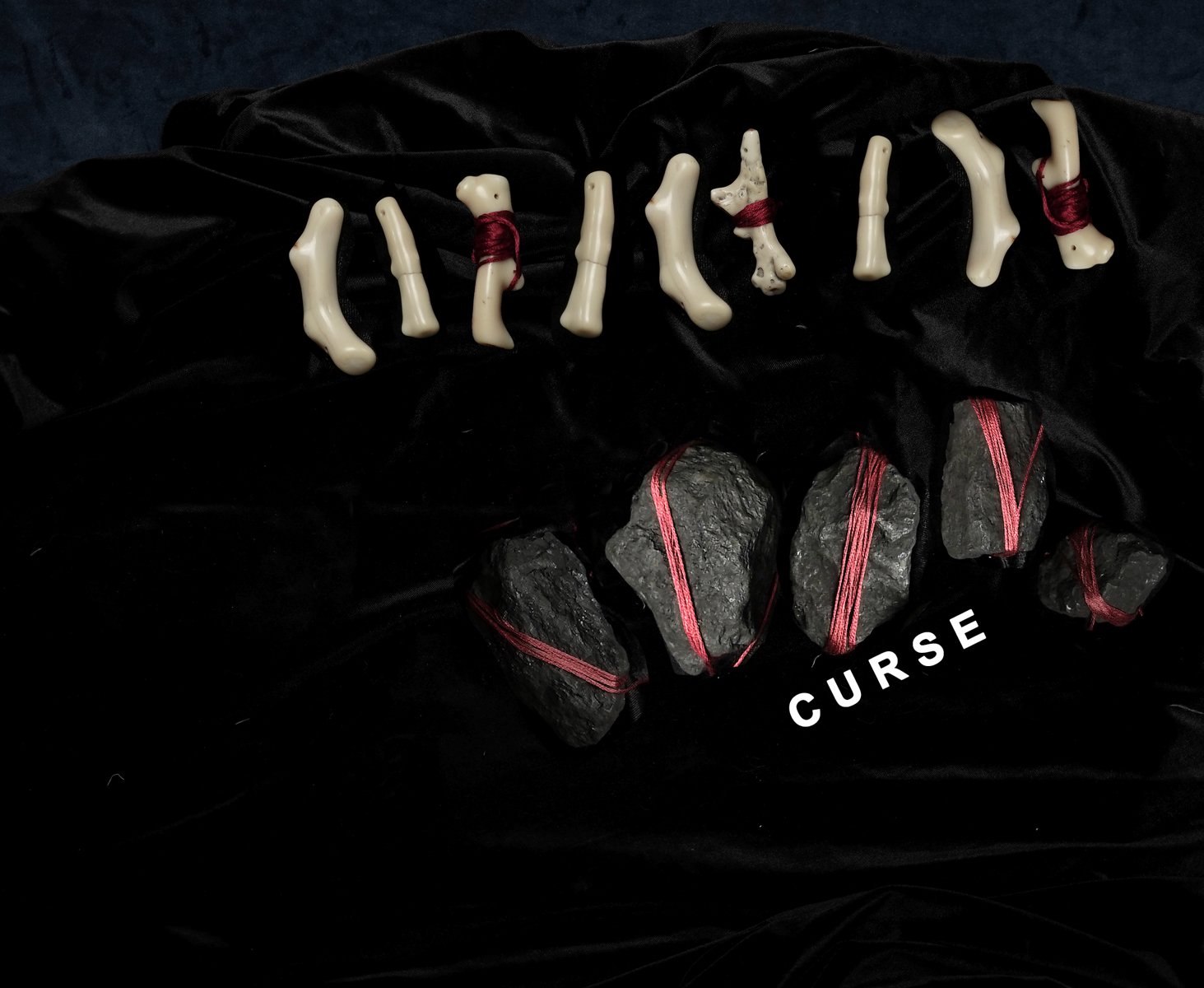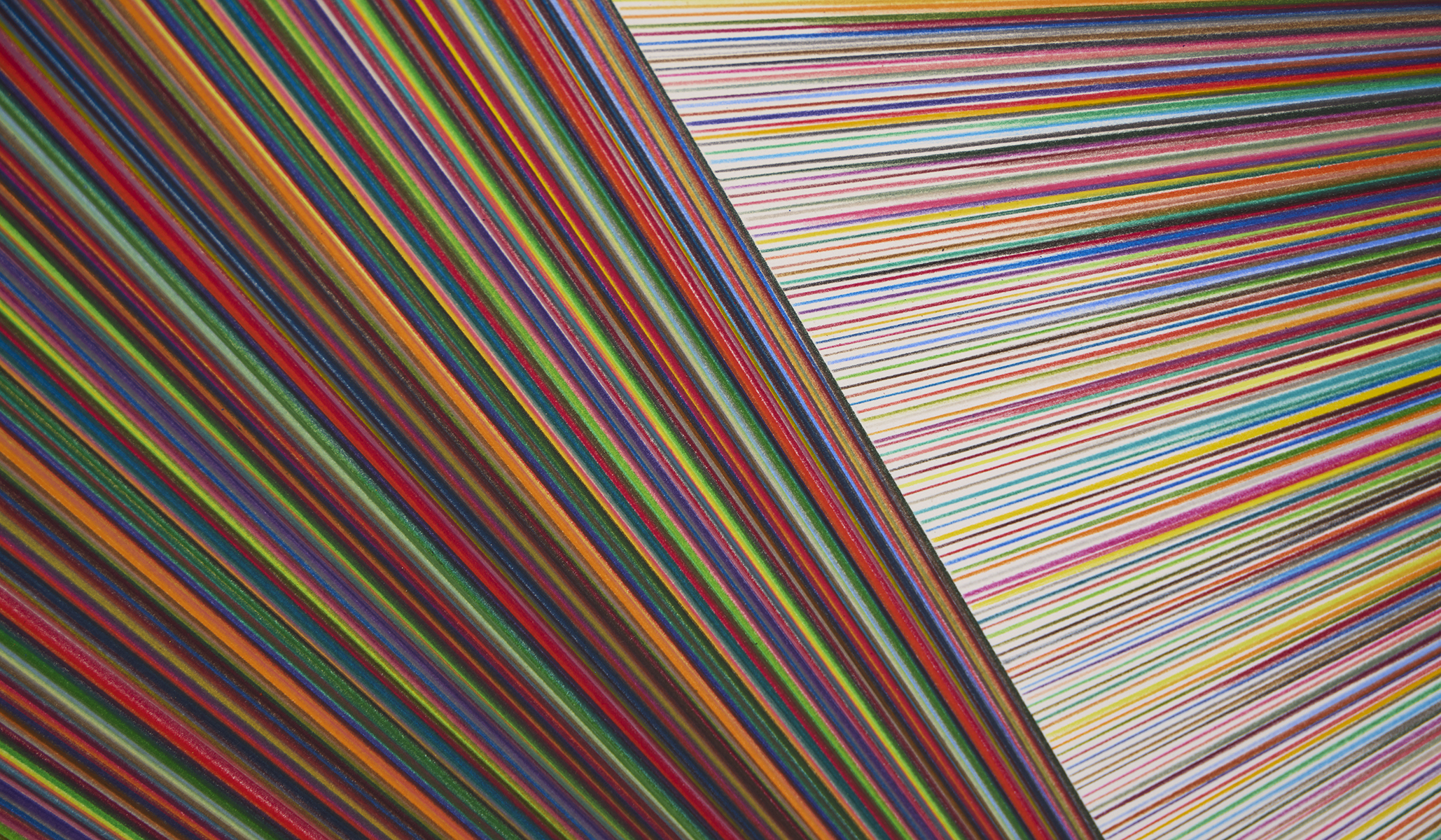This June, Artereal Gallery is excited to present Object-Bound Curses, a darkly spell-binding online exhibition showcasing a new series of works by Sydney-based artist Penelope Cain.
(To view & purchase artworks from this series scroll to the end of this online exhibition page).
Calling upon audiences to enter an imaginary realm in which the power of magic can be harnessed to curse away the current plague of environmental threats which loom over our contemporary existence, Penelope Cain presents a mysterious series of banners and collages which draw on a sense of the wondrous in the face of the bleak.
Spell-binding. Bewitching. Ritualistic.
Experience Penelope Cain.
Experience. Artereal.

An object-bound curse describes a curse that, rather than being directed at a particular person, is attached to an object, affecting whoever comes into contact with it.
There is a term, the ‘resource curse’, often applied to countries with an abundance of non-renewable resources, such as gas and coal. Economic definitions describe this resource curse playing out as a conflict between a country’s resource commons, such as coal, gas, oil and minerals, and opportunities for exploitation, secrecy, corruption and mis-governance. Australia has contended with this curse, this paradox of plenty, since white colonisation.
Object-bound Curses takes as a pivot point that time that (then-Treasurer) Scott Morrison, spruiked a lump of coal in Parliament. The lump of coal carried into Parliament in February 2017 was from the Hunter Valley. It was formed from late-Permian vegetation; Gondwana forests from 250 million years ago. It had been lacquered to prevent it from dirtying politicians’ hands.
In this new series of textile banners and works on paper, Penelope Cain uses the quotidian media of collage and photography to generate a playfully dark series of imaginary Curses.
Pretending for a moment that cursing is a thing, that power is misused and that words such as vested interests, cabal and lobbying can be bound to objects such as coal and gas pipelines, Cain’s proposed curses draw on magic and spellbinding to offer up an alternative methodology for neutralization. Providing bewitching solutions in a world fraught by rising environmental and sustainability concerns.
Cursing at an industrial level has been attempted previously. In the 1960s, in Japan, in response to environmental poisoning from industrial contamination (leading to extensive human and animal disease), a small group of Buddhist monks formed a protest group. They picketed factory entities found to be contaminating land, forming a procession, then drummed and chanted Abhichara rites, with the aim of cursing the factory owners to death. (With thanks to Koichiro Osaka’s compelling exhibition and catalogue, Curse Mantra, Parasite Art Centre, HK, 2018).
Drawing on these fabled and mythological beliefs in an alternate way of dealing with the harsh realities and cold consequences of industrialization and capitalism, Cain’s series of curses act as an allegory, which although darkly humorous and bitingly cynical, are nonetheless intended to bolster and give hope.
Across all of these artworks, the faces themselves have vanished, and the corpus of power can only be made out by that which surrounds it. Power itself is a slippery and transparent construct. Like all good ghostly apparitions and magical manifestations, it cannot be seen, only sensed.
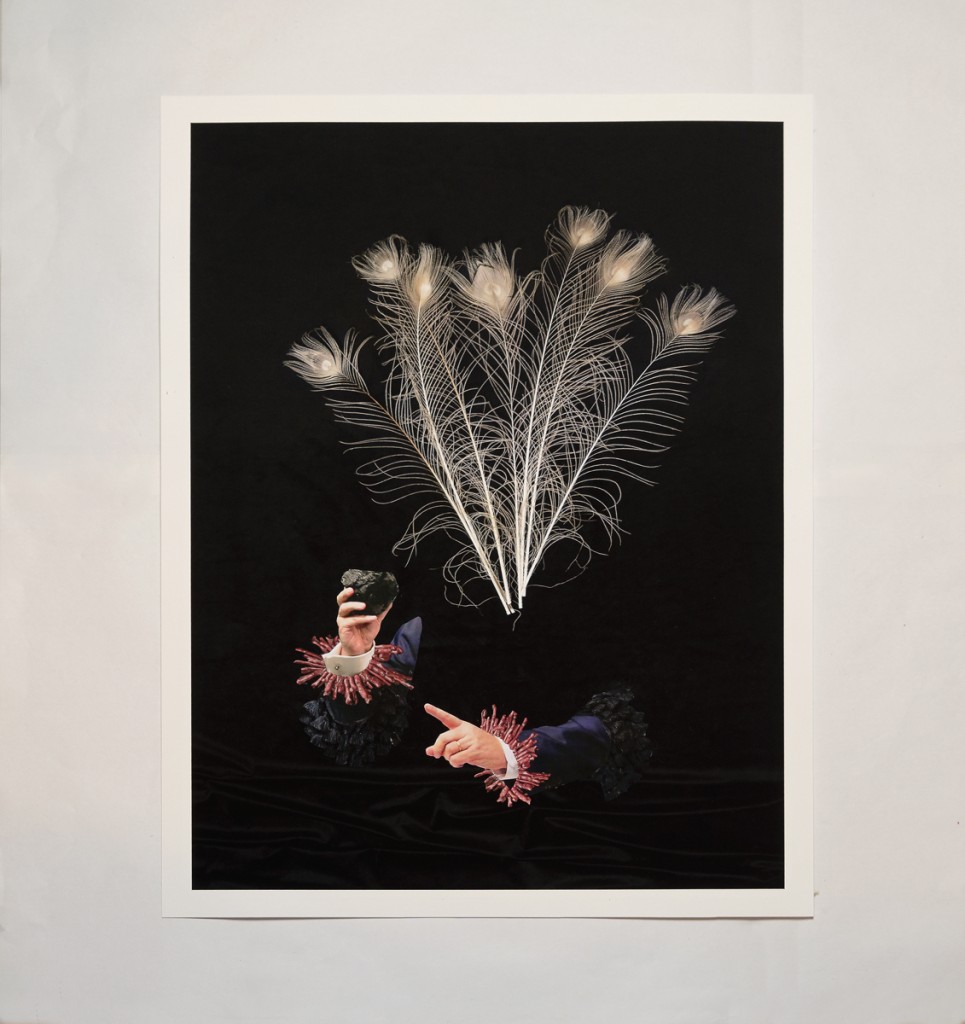
Artist Biography
Penelope Cain is an interdisciplinary artist with a research science background. Landscape, in its broadest definition, is at the centre of her practice. She is particularly interested in the colonised, transformed and extracted landscapes of the Anthropocene.
Penelope Cain graduated MFA from Sydney College of the Arts (2016), was a finalist in the Sulman Prize, Art Gallery of NSW (2017), awarded the prestigious Favette-Lauriero Travelling Scholarship (2018) and Glenfiddich Contemporary Art residency (2019). Most recent exhibitions include Interregnum, solo commissioned exhibition, Casula Powerhouse, curator Luke Letourneau (2019) and Incendiary, Pound Arts, London, curator Patricia Brien. (2020). Upcoming, she has been invited to make work for SACO 1.0 Contemporary Art Biennale, Chile, 2021, around extremophile bacteria recently discovered in the Atacama desert.

